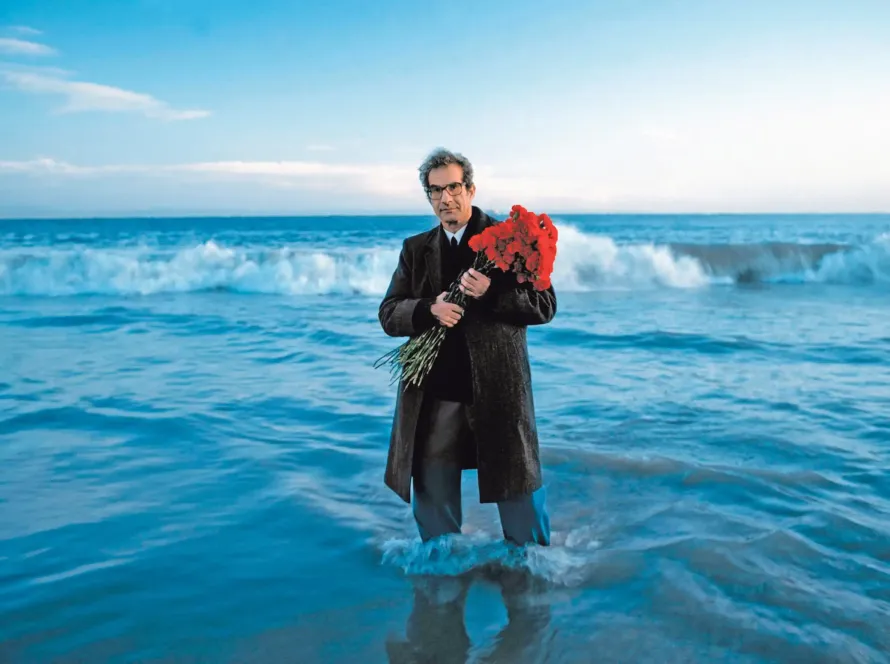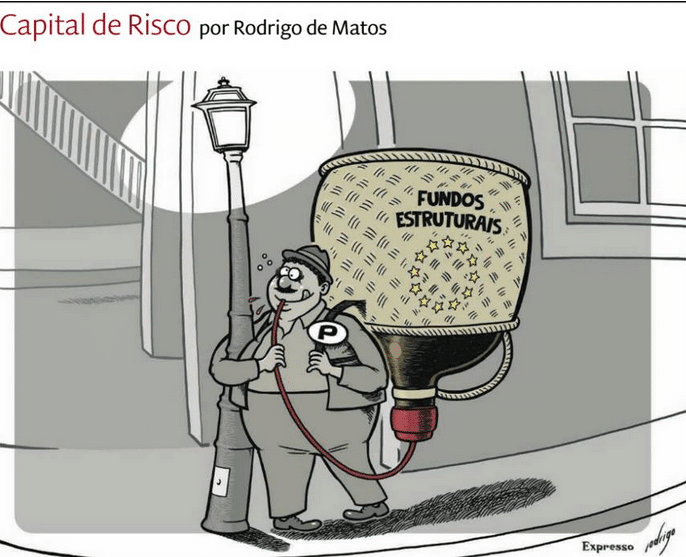Thomas Jefferson, the Abbot Correa da Serra and Portuguese Wines
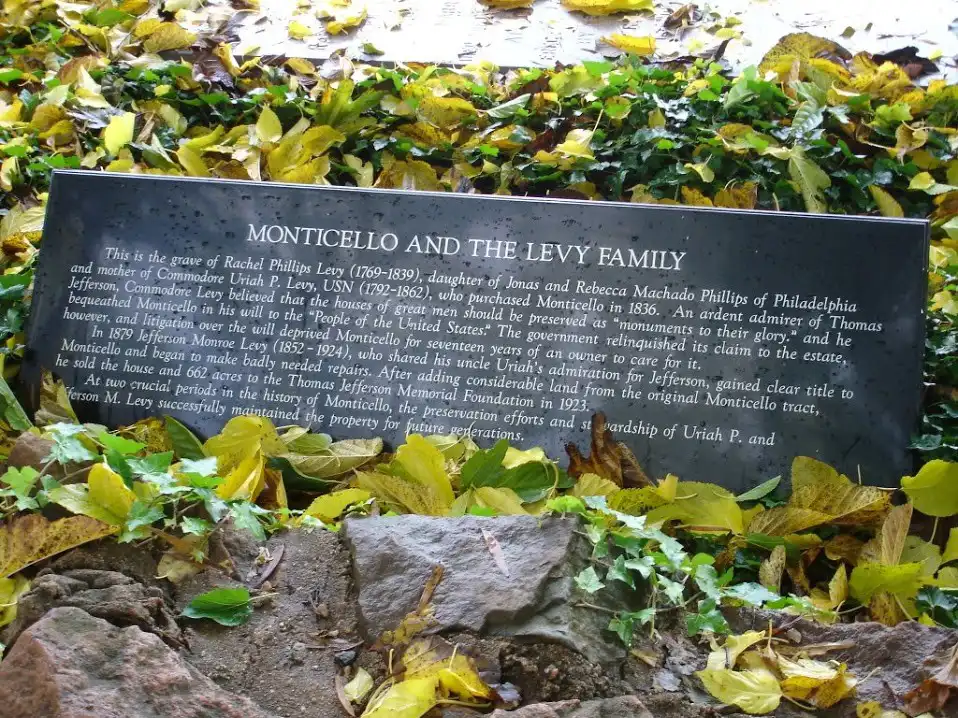
While visiting Monticello a couple of years ago, above shown grave stone on Mulberry Row caught my attention for obvious reasons: there was a Portuguese name on it, Machado, even more striking as it is my own family name. The mentioned Levy family, a Sephardic Jewish family of Portuguese origin, would have been the owners of the property for 89 years – between 1834 and 1923. Rebecca Machado Phillips was the grandmother of the first Levy owner of Monticello, commodore of the US Navy, Uriah Phillips Levy.
They would have preserved the property at least partly in honor of Thomas Jefferson before having sold it to the current owners, the Thomas Jefferson Memorial Foundation in 1923. This foundation would have been created by the second Levy owner of the property himself, congressman from New York Jefferson Monroe Levy, nephew of commodore Uriah Levy.[i]
“Uriah Levy was a very colorful and controversial character. Not only an ardent Jefferson admirer, he was also the first Jewish American to make a career as a U.S. naval officer. Larger than life, he was a hero in the War of 1812, defended Jewish rights, campaigned against flogging in the Navy, killed a man in a duel, was court martialed six times, and, at age 61, he took a teenage wife who proudly nailed a mezzuzah on the doorpost of his captain’s quarters.
Levy was also the descendent of a crypto Jewish doctor in Portugal who was saved by the Grand Inquisitor because the latter needed him to treat a bladder infection. When Uriah Levy’s parents got married, it was probably the first Jewish wedding in America, and it’s believed that no less a personage than George Washington attended.”[ii]
One can find a different version that goes like this: “Following Jefferson’s death, the property was purchased by Diogo Nunez Ribeiro, King João V’s former doctor and the uncle of António Nunes Ribeiro Sanches, Jewish doctor and Freemason. Ribeiro Sanches’ educational reforms inspired the Marquis de Pombal’s reform program.”[iii]
[i] Carreiro, Humberto Duarte My Third Visit to Monticello, as accessed December 20, 2013
[ii] Fein, Judith The Jews Who Saved Monticello, San Diego Jewish Journal, August 2011
[iii] Simões, Ana et al Citizen of the World. A Scientific Biography of the Abbé Correia da Serra, Institute of Governmental Studies Press, University of California, Berkeley, 2012

The abbot Correia da Serra
The abbot José Francisco Correia da Serra (1750[i]-1823), a polymath – philosopher, diplomat, politician and scientist – left Europe to the USA in 1813. “His travels took him several times to Monticello, the home of former President Thomas Jefferson where his political views found a fulsome reception.”[ii]
Some even go so far as to describe him as a “close friend of Thomas Jefferson.”[iii] “The Portuguese abbé first met Jefferson on a visit to Monticello in the summer of 1813. His host was captivated by the learned foreigner, calling him “the greatest collection and best digest of science in books, men, and things that I have ever met with; and with these the most amiable and engaging character.” In his nine years in America, Correia visited Monticello seven times, making what he always called his annual “pilgrimage”. The North Square Room at Monticello is also known by some as the Abbé Correia da Serra’s room.
In 1816 Correia was appointed Portugal’s minister plenipotentiary (ambassador) to the United States, which he left in 1820[iv], or 1821.[v]
[i] Or 1751 according to De Rerum Natura blog, or to the Instituto Camões website, as accessed December 18, 2013.
[ii] José Correia da Serra, in Wikipedia, as accessed December 17, 2013.
[iii] José Correia da Serra, in Thomas Jefferson online encyclopedia, as accessed December 17, 2013.
[iv] José Correia da Serra, in The Jefferson Monticello, as accessed December 17, 2013.
[v] Correia da Serra, in Ciência em Portugal, as accessed December 17, 2013.

This relationship was the reason, I presume, why a recently created research institute affiliated with one Lisbon university has taken the name of both these personalities for its designation, the Institute of Public Policy Thomas Jefferson – Correia da Serra.
Correia da Serra died in 1823. From his 72 or 73 years of life he had only spent 26 in Portugal.[i]
One of his more demanding tasks as an ambassador in the USA was the fight against so-called privateering, “the practice of using private armed vessels commissioned by governments to attack warships and seize or plunder merchant ships”, in this case Spanish and Portuguese ships sailing between Latin America and Iberia. “The American privateers were operating mostly from the port of Baltimore, often with the complacency of authorities, even though it was an illegal activity.”[ii]
Correia da Serra also attracted a lot of flak from US radical press when he proceeded to defend Portuguese sovereignty in Brazil against Pernambuco rebels through unorthodox means, mainly writing signed and anonymous pieces and having them published in the local press. “Without even realizing it, the Abbé Correia had been on a collision path with what became one of the underlying principles of American foreign policy in the years and decades that followed. The Monroe Doctrine, first clearly expounded in the 1820s, embodied the idea that it was not only the mission of the United States, but also its ‘manifest destiny’, to assume a prominent role in the affairs of the New World.”[iii]
In Correa da Serra’s own words: “I am tired of five years of this laborious mission, and most heartily tired of democratic society. Rational Liberty can be fully enjoyed under other forms, do not believe half of what is said in Europe of this country, and of what they most ostentatiously publish and say of themselves. They have the vanity of believing it all, but except in eagerness for money…, they are not yet comparable to ripe European nations, and they are not less rotten.”[iv]
Correia’s term as an ambassador of Portugal[v] in Washington was quite controversial, and, contrary to Jefferson’s expectations of a routine job,” would probably have ended in war had Portugal possessed the strength to wage it.” (Davis 1955, p.104)[vi]
Jefferson would have counted also with Correia da Serra’s collaboration and support on the defense of religious freedom as he inscribed in the respective Virginia Statute and on the foundation of the state University of Virginia, “its curriculum, how the faculty should be recruited, and how the botanical garden should be organized.”[vii]
[i] Ana Simões, Maria Paula Diogo & Ana Carneiro Cidadão do Mundo. Uma biografia científica do Abade Correia da Serra, Porto Editora, 2006 (version in English: Citizen of the World. A Scientific Biography of the Abbé Correia da Serra, Institute of Government Studies Press, University of California, Berkeley, 2012)
[ii] Silva, Edgard Medeiros “The Powerless Diplomacy of the Abbé Correia da Serra” Revista Anglo-Saxónica, Ser.III, nº1, 2010, p.347
[iii] Ibidem, p.353
[iv] Quoted from Richard Beale Davis The Abbé Correa in America, 1812-1820. The Contributions of the Diplomat and Natural Philosopher to the Foundations of Our National Life, The American Philosophical Society, Philadelphia, 1955, p.111
[v] Then the United Kingdom of Portugal & Brazil with capital in Rio de Janeiro.
[vi] For a very detailed rendition of Correia da Serra’s tiresome spell as ambassador to the USA you may wish to consult Léon Bourdon “José Corréa da Serra. Ambassadeur du Royaume-Uni de Portugal et Brésil à Washington. 1816-1810”, Fundação Calouste Gulbenkian, Paris, 1975
[vii] “The Odd Couple”, chapter 9 of Kenneth Maxwell Naked Tropics. Essays on Empire and other Rogues. Routledge, 2003, p. 181
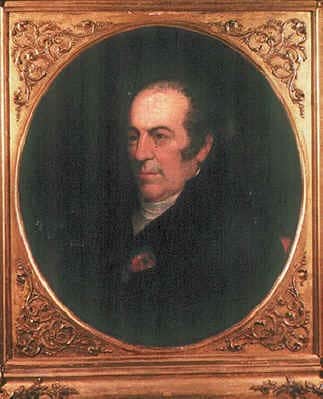
“The Abbé was such a regular visitor to Monticello that Jefferson’s granddaughter referred to one first floor bedroom as ‘the Abbé Correa’s room’.”[i] “On the first floor at Monticello, across the hallway from Jefferson’s own suite, there are two bedrooms: one is the Madison room and the other the Abbé Correa da Serra room.
This room was set aside for Correa da Serra and half a century later Jefferson’s granddaughter still called it the Abbé Correa room. This was where Abbé Correa da Serra stayed when he visited Jefferson.”[ii] This North Square Room[iii] was restored in the 90s with a financial contribution from the Luso-American Foundation (FLAD).[iv]
[i] Lars Schoultz Beneath the United States. A History of U.S. Policy toward Latin America Harvard University Press, 1998, p. 6
[ii] “The Odd Couple”, chapter 9 of Kenneth Maxwell Naked Tropics. Essays on Empire and other Rogues. Routledge, 2003, p. 176
[iii] The Decorative Arts Trust website, as accessed December 18, 2013
[iv] FLAD website as accessed December 18, 2013
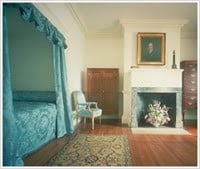
Thomas Jefferson’s Portuguese wines
Considered by some as “the most knowledgeable wine connoisseur of his age”, “his tastes in wine covered the world: France, Germany, Italy, Cyprus, Hungary, Madeira, Portugal, Spain and, of course, America.”[i] In his early years as a wine consumer Thomas Jefferson went mostly for Madeira and Port: “He was enjoying the pleasures of home, stocking alcohol for some guests, but for himself and friends with similar tastes he preferred light wines, Madeira, beer, port and cider.”[ii]
It is common knowledge that Thomas Jefferson would have toasted the signing of the Declaration of Independence with Madeira wine, which of course he preferred to the detriment of Port wine, the favorite of the English. “The first ordinary list available, that for coastal Lancaster County in 1760, shows only three wines: Madeira, Port, and Claret.”
Thomas Jefferson’s wine taste has evolved along the years[iii], from sweet wines to table wines, from Portuguese and Spanish wines to French and Italian wines. Among those listed in John Hailman’s book[iv] we can count some 20 different Portuguese wines and grape varieties.[v]
Gabler adds a couple more.[vi]
Although he lost interest in fortified wines in his later years, Thomas Jefferson purchased and cellared more Madeira in his lifetime than any other wine. No wonder, because “Madeira was the American wine of Jefferson’s time, and the wine of choice of most of the Founding Fathers”. (Hailman, p. 39)
[i] Gabler, James M. Passions. The Wines and Travels of Thomas Jefferson, Bacchus Press, Baltimore, 1995, p.xiii
[ii] Gabler, ibidem, p.6
[iii] For a short description of its evolution you may read this entry of TJ’s encyclopedia.
[iv] Hailman, John R. Thomas Jefferson on Wine, University Press of Mississippi, 2006, p.31 (first chapter of which was transcribed in the New York Times of December 3, 2006).
[v] Among those listed in the índex: Arinto, Arruda(e), Azores, Bucellas, Carcavel(l)os (Calcavallo, p.125), Carrasq(u)eir(r)a, Estoril, Fayal, Lisbon, Madeira, Malvasia (a Mediterranean wine grape variety also known as Malmsey popular in Madeira), Muscatel, Oeyras (Oeiras), Pico (p.125), Port, Setubal, Termo, Torres (p.215). Charneco, Lancer’s and Mateus were also mentioned in this book, but not as having been consumed by Thomas Jefferson.
[vi] Gabler (James M. Gabler Passions. The Wines and Travels of Thomas Jefferson, Bacchus Press, Baltimore, 1995), lists also Brazil(ian) Madeira, Lisbon Malmsey, Madeira Malmsey, Calcavallo (Carcavelos) p.93, Madere (Madeira), Malmsey/Malvasia (probably from Madeira among other origins), Oporto p.93,
[1] Carreiro, Humberto Duarte My Third Visit to Monticello, as accessed December 20, 2013
[1] Fein, Judith The Jews Who Saved Monticello, San Diego Jewish Journal, August 2011
[1] Simões, Ana et al Citizen of the World. A Scientific Biography of the Abbé Correia da Serra, Institute of Governmental Studies Press, University of California, Berkeley, 2012
[1] Or 1751 according to De Rerum Natura blog, or to the Instituto Camões website, as accessed December 18, 2013.
[1] José Correia da Serra, in Wikipedia, as accessed December 17, 2013.
[1] José Correia da Serra, in Thomas Jefferson online encyclopedia, as accessed December 17, 2013.
[1] José Correia da Serra, in The Jefferson Monticello, as accessed December 17, 2013.
[1] Correia da Serra, in Ciência em Portugal, as accessed December 17, 2013.
[1] Ana Simões, Maria Paula Diogo & Ana Carneiro Cidadão do Mundo. Uma biografia científica do Abade Correia da Serra, Porto Editora, 2006 (version in English: Citizen of the World. A Scientific Biography of the Abbé Correia da Serra, Institute of Government Studies Press, University of California, Berkeley, 2012)
[1] Silva, Edgard Medeiros “The Powerless Diplomacy of the Abbé Correia da Serra” Revista Anglo-Saxónica, Ser.III, nº1, 2010, p.347
[1] Ibidem, p.353
[1] Quoted from Richard Beale Davis The Abbé Correa in America, 1812-1820. The Contributions of the Diplomat and Natural Philosopher to the Foundations of Our National Life, The American Philosophical Society, Philadelphia, 1955, p.111
[1] Then the United Kingdom of Portugal & Brazil with capital in Rio de Janeiro.
[1] For a very detailed rendition of Correia da Serra’s tiresome spell as ambassador to the USA you may wish to consult Léon Bourdon “José Corréa da Serra. Ambassadeur du Royaume-Uni de Portugal et Brésil à Washington. 1816-1810”, Fundação Calouste Gulbenkian, Paris, 1975
[1] “The Odd Couple”, chapter 9 of Kenneth Maxwell Naked Tropics. Essays on Empire and other Rogues. Routledge, 2003, p. 181
[1] Lars Schoultz Beneath the United States. A History of U.S. Policy toward Latin America Harvard University Press, 1998, p. 6
[1] “The Odd Couple”, chapter 9 of Kenneth Maxwell Naked Tropics. Essays on Empire and other Rogues. Routledge, 2003, p. 176
[1] The Decorative Arts Trust website, as accessed December 18, 2013
[1] FLAD website as accessed December 18, 2013
[1] Gabler, James M. Passions. The Wines and Travels of Thomas Jefferson, Bacchus Press, Baltimore, 1995, p.xiii
[1] Gabler, ibidem, p.6
[1] For a short description of its evolution you may read this entry of TJ’s encyclopedia.
[1] Hailman, John R. Thomas Jefferson on Wine, University Press of Mississippi, 2006, p.31 (first chapter of which was transcribed in the New York Times of December 3, 2006).
[1] Among those listed in the índex: Arinto, Arruda(e), Azores, Bucellas, Carcavel(l)os (Calcavallo, p.125), Carrasq(u)eir(r)a, Estoril, Fayal, Lisbon, Madeira, Malvasia (a Mediterranean wine grape variety also known as Malmsey popular in Madeira), Muscatel, Oeyras (Oeiras), Pico (p.125), Port, Setubal, Termo, Torres (p.215). Charneco, Lancer’s and Mateus were also mentioned in this book, but not as having been consumed by Thomas Jefferson.
[1] Gabler (James M. Gabler Passions. The Wines and Travels of Thomas Jefferson, Bacchus Press, Baltimore, 1995), lists also Brazil(ian) Madeira, Lisbon Malmsey, Madeira Malmsey, Calcavallo (Carcavelos) p.93, Madere (Madeira), Malmsey/Malvasia (probably from Madeira among other origins), Oporto p.93,

